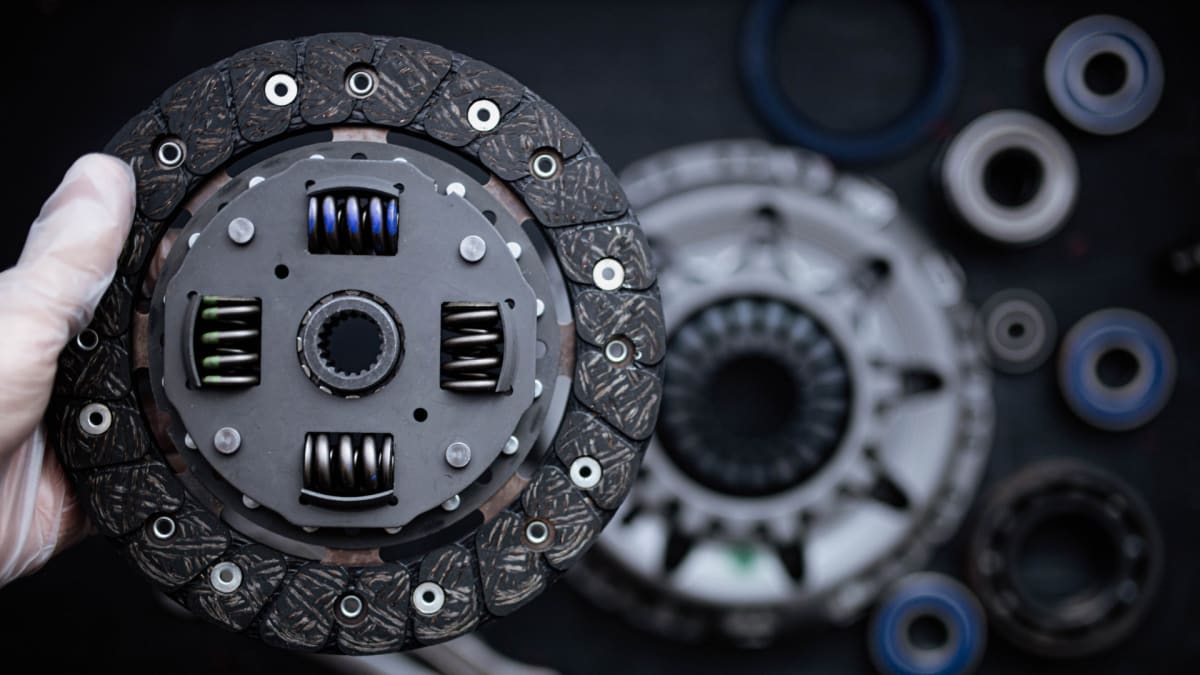Replacing a clutch is one of those car maintenance tasks that many drivers will face at some point during their vehicle’s life. It can be a bit daunting to think about, especially if you're not familiar with the ins and outs of car mechanics. The time it takes to fit a clutch can vary depending on several factors, such as the make and model of your car, the condition of the parts involved, and the expertise of the mechanic doing the job. In this straightforward guide, we’ll break down the process and give you a clear understanding of how long it typically takes to fit a clutch, offering practical insights along the way.
Introduction to Clutch Fitting
Understanding the Clutch System
Understanding the clutch system is crucial before embarking on its replacement. The clutch is a key component in manual transmission vehicles, acting as a bridge between the engine and the gearbox. It allows you to smoothly change gears and temporarily disconnects the engine from the wheels without turning off the engine. The system comprises several parts: the clutch plate, pressure plate, release bearing, and flywheel. Over time, these components wear down due to friction and heat, leading to a slipping clutch, difficulty shifting gears, or complete failure. Recognising the symptoms of a failing clutch can save you from more significant issues down the line. It's essential to understand that each vehicle may have slight variations in clutch design, influencing how long the fitting process takes. Familiarising yourself with these elements can make the replacement process less intimidating and help you communicate more effectively with your mechanic.
Importance of Proper Installation
Proper installation of a clutch is vital for the smooth operation and longevity of your vehicle. A poorly fitted clutch can lead to numerous problems, including premature wear, reduced fuel efficiency, and potential damage to other drivetrain components. Incorrect alignment or insufficient tightening of bolts can cause the clutch to slip or chatter, leading to uncomfortable driving and increased repair costs down the line. Furthermore, a misaligned clutch can place undue stress on the gearbox and other parts, resulting in expensive repairs. Ensuring the clutch is installed correctly can also enhance your vehicle's performance, providing smoother gear transitions and a more responsive driving experience. It's crucial that a qualified mechanic, familiar with your vehicle's specific requirements, performs the installation. Taking the time to ensure proper installation can prevent unnecessary headaches and keep your car running smoothly for many miles to come.
Factors Influencing Time
Several factors can influence how long it takes to fit a clutch, each playing a role in the overall time required. The make and model of your vehicle are primary considerations. Some models have clutches that are more accessible, while others may require extensive disassembly of other parts. The condition of the vehicle also plays a part; older vehicles might have rusted or seized components, complicating the job. Additionally, the mechanic's experience significantly affects the fitting time. A seasoned professional familiar with your car’s design will likely complete the task more swiftly than someone less experienced. Availability of parts is another factor; if specific components need replacing, delays in acquiring them can extend the process. It's also worth considering the workshop's workload, as a busy schedule might lead to longer waiting times. Understanding these factors can help you better predict the time required for clutch replacement.
Preparation Before Fitting
Tools and Equipment Needed
Having the right tools and equipment is crucial for a successful clutch fitting. Basic tools include a set of spanners and sockets, which are essential for loosening and tightening bolts. A torque wrench is necessary to ensure bolts are fastened to the correct specifications, preventing future issues. You'll also need a clutch alignment tool to properly position the clutch plate during installation, ensuring it engages smoothly with the flywheel. A jack and axle stands or a hydraulic lift are required to safely elevate the vehicle, providing access to the transmission. A transmission jack will aid in the safe removal and installation of the gearbox. Additionally, brake cleaner is useful for cleaning components, and thread-locking compound can secure bolts. Having a comprehensive toolkit not only helps in efficient fitting but also ensures the job is done safely and correctly, minimising the risk of damage or injury.
Safety Measures to Consider
Safety is paramount when fitting a clutch, as the process involves working beneath a vehicle and handling heavy components. First and foremost, ensure the vehicle is securely elevated on a stable surface using axle stands or a hydraulic lift. Never rely solely on a jack, as it can fail, posing a significant risk. Wearing safety goggles and gloves can protect you from debris and sharp edges. Before starting, disconnect the battery to prevent accidental electrical shorts. Be cautious of hot engine parts if the vehicle has been running recently. Maintain a tidy workspace to avoid tripping hazards, and ensure all tools are in good condition to prevent slipping. If lifting the gearbox, use a transmission jack to avoid physical strain or injury. Always be aware of your surroundings and work methodically, taking breaks when needed to maintain focus. Prioritising safety measures not only protects you but also ensures a more efficient and error-free installation process.
Vehicle Inspection Checklist
Before fitting a new clutch, conducting a thorough vehicle inspection is crucial to identify any underlying issues that might affect the installation process. Start by checking the clutch pedal operation for any resistance or abnormal noise. Examine the hydraulic system, including the master and slave cylinders, for leaks or wear, as these could compromise clutch performance. Inspect the gearbox for signs of oil leaks, which might indicate worn seals or failed components. While under the vehicle, check the condition of the driveshafts and CV joints for damage or excessive wear. Assess the flywheel for cracks or hot spots, as these can affect the clutch's engagement and lifespan. Additionally, ensure the engine mounts are secure and intact, as worn mounts can lead to misalignment issues. Completing this checklist will help ensure that the new clutch operates smoothly and efficiently, reducing the likelihood of future problems and extending the life of your vehicle’s transmission system.

Step-by-Step Clutch Fitting Process
Removing the Old Clutch
Removing the old clutch is a meticulous process that requires patience and precision. Begin by ensuring the vehicle is safely elevated and the battery is disconnected. Remove any components obstructing access to the transmission, such as the starter motor and driveshafts. Carefully support the gearbox with a transmission jack before detaching it from the engine. Once the gearbox is lowered, you'll gain access to the clutch assembly. Loosen the bolts securing the pressure plate, removing them evenly in a criss-cross pattern to prevent warping. With the pressure plate and clutch disc now free, inspect the flywheel for wear or damage, as it may need resurfacing or replacement. Keep track of all bolts and parts removed, organising them for easy reassembly. This careful disassembly ensures that no components are damaged and paves the way for a smooth installation of the new clutch, maintaining the integrity of the vehicle's transmission system.
Installing the New Clutch
Installing the new clutch requires precision to ensure optimal performance. Start by confirming that the flywheel is clean and free of any oil or debris. Position the new clutch disc against the flywheel, ensuring the correct side faces the transmission. Use a clutch alignment tool to hold the disc in place, which is crucial for aligning the clutch with the gearbox input shaft. Next, attach the pressure plate over the clutch disc, securing it loosely with bolts. Gradually tighten the bolts in a criss-cross pattern to evenly distribute pressure, avoiding warping. Once secured, remove the alignment tool. Inspect the release bearing and replace if necessary, as a worn bearing can impair clutch function. Carefully reposition the gearbox, aligning it with the engine and clutch assembly. Secure the gearbox with bolts, reattach any removed components, and reconnect the battery. A precise installation ensures the new clutch operates smoothly, providing reliable performance and longevity.
Testing and Adjustments
After fitting the new clutch, testing and adjustments are essential to ensure everything functions correctly. Begin by checking the clutch pedal feel; it should operate smoothly without excessive stiffness or looseness. Start the engine and engage the clutch pedal, shifting through each gear to assess engagement and disengagement. Listen for any unusual noises or vibrations, as these could indicate misalignment or issues with the installation. If the clutch feels too high or low, adjust the clutch cable or hydraulic system to achieve the correct pedal height and engagement point. Test the vehicle in a safe area, paying attention to the clutch's responsiveness and overall driving experience. The clutch should engage smoothly without slipping or juddering. If any problems persist, revisit the installation steps or consult a professional mechanic. Proper testing and adjustments ensure the new clutch performs optimally, enhancing driving comfort and prolonging the life of the transmission system.
Common Challenges and Solutions
Troubleshooting Installation Issues
If you encounter issues after installing a new clutch, systematic troubleshooting can help identify and resolve problems. Start by checking the clutch pedal's firmness; a spongy feel may suggest air in the hydraulic system, requiring bleeding to remove air bubbles. If the clutch slips, ensure that the pressure plate bolts are torqued correctly and that no oil has contaminated the disc. Difficulty in shifting gears might indicate a misaligned clutch or an improperly installed release bearing. In such cases, revisiting alignment and installation steps can rectify the issue. Unusual noises during operation could be due to loose components or a worn release bearing, necessitating inspection and possible replacement. Always verify that all parts are installed according to manufacturer specifications and that the clutch cable or hydraulic system is correctly adjusted. Addressing these common installation issues promptly can prevent further complications and ensure the clutch performs reliably in the long term.
Dealing with Unexpected Delays
Unexpected delays during clutch fitting can occur due to various reasons, but being prepared can help minimise their impact. One common cause is the unavailability of specific parts, which can be mitigated by verifying component compatibility and stock levels before beginning the job. If parts need ordering, inquire about expedited shipping to reduce waiting time. Another potential delay is discovering additional issues, such as worn flywheels or leaking seals, which require immediate attention. Building extra time into your schedule allows for these unforeseen repairs. Communication with the supplier or mechanic is crucial to ensure prompt updates and solutions. If you're doing the work yourself, having a comprehensive set of tools and access to repair manuals or online guides can also help you tackle unexpected challenges. Planning ahead and staying flexible can significantly reduce the frustration associated with delays, ensuring a smoother and more efficient clutch fitting process.
Ensuring Longevity of the Clutch
To ensure the longevity of your newly installed clutch, adopting proper driving habits and regular maintenance is key. Begin by avoiding aggressive driving behaviours, such as rapid gear changes and excessive clutch slipping, which can prematurely wear down the clutch components. Instead, aim for smooth and gradual gear shifts. Always fully depress the clutch pedal when changing gears to prevent unnecessary stress on the clutch disc. Regularly checking and maintaining the hydraulic fluid or clutch cable can prevent operational issues. It's also beneficial to monitor for any signs of clutch problems, such as slipping or difficulty engaging gears, addressing them promptly to avoid further damage. Keeping the vehicle's transmission and related components in good condition through routine inspections can also support clutch performance. By following these practices, you can extend the life of your clutch, ensuring reliable and efficient operation over an extended period, thus reducing the need for frequent replacements.
Conclusion and Final Tips
Recap of Key Points
In summary, fitting a clutch involves several critical steps that require attention to detail and safety. Understanding the clutch system and its components is foundational to the process, helping you recognise when replacement is necessary. Proper preparation, including gathering the right tools and conducting a thorough vehicle inspection, sets the stage for a successful installation. Throughout the fitting process, ensuring that each component is correctly aligned and secured is vital for optimal performance. Testing and making necessary adjustments post-installation can help identify any issues early on. It's also essential to troubleshoot common problems and manage unexpected delays effectively. Finally, adopting good driving habits and regular maintenance routines can significantly extend the life of your clutch. By following these guidelines, you can ensure a smooth and effective clutch fitting experience, enhancing your vehicle's performance and reliability over time. Prioritising each of these aspects will contribute to the overall success of the clutch replacement.
Final Words of Advice
Approaching clutch replacement with a clear plan and understanding can make the process less daunting. If you're tackling this task yourself, arm yourself with knowledge through repair manuals or online resources specific to your vehicle model. Don't hesitate to seek professional help if you're unsure about any step, as improper installation can lead to costly repairs. Patience and precision are your best tools, ensuring that each part is fitted correctly for optimal function. Regularly inspect and maintain your clutch system to catch minor issues before they escalate. Remember that investing time in proper installation and upkeep will save you from frequent replacements and enhance your vehicle's performance. Lastly, respect the complexity of the task, and know your limits—sometimes, leaving it to a skilled mechanic is the wisest choice. With these considerations in mind, you can enjoy a smoothly operating clutch and a more enjoyable driving experience for miles to come.
Encouragement for DIY Enthusiasts
For those who enjoy the satisfaction of tackling automotive tasks themselves, clutch replacement can be a rewarding project. While it might seem challenging at first, breaking the process down into manageable steps can simplify the task. Start by gathering the necessary tools and familiarising yourself with your vehicle’s specific requirements. Online forums and DIY guides can offer valuable insights and tips from others who've undertaken similar projects. Remember, patience and attention to detail are your greatest allies. Approach the task without rushing, and take breaks to prevent fatigue and mistakes. Troubleshooting is part of the learning curve, so view any setbacks as opportunities to improve your skills. Completing a clutch replacement yourself not only saves money but also builds confidence in your mechanical abilities. As you gain experience, you'll find that the sense of accomplishment from successfully driving a car you've worked on yourself is incredibly rewarding. Keep learning, and enjoy the journey of DIY car maintenance.









